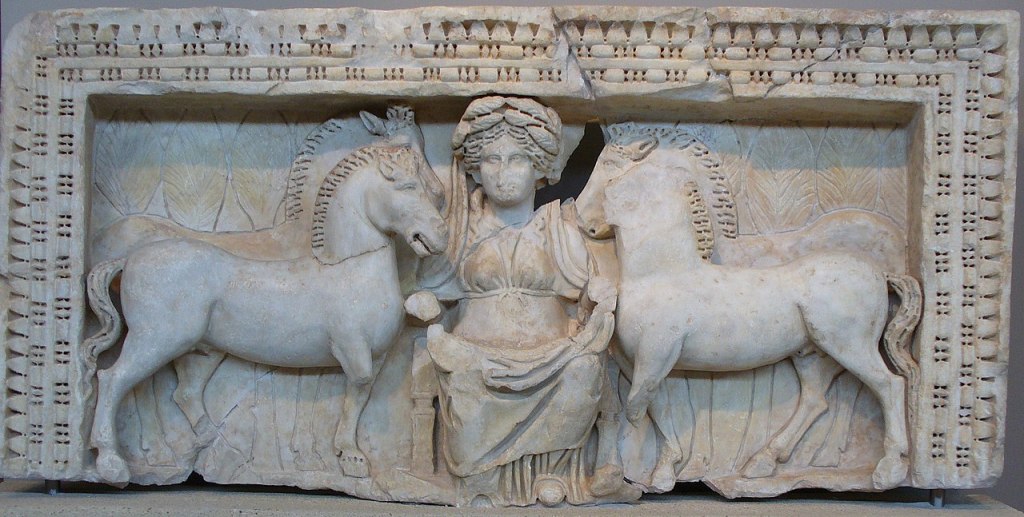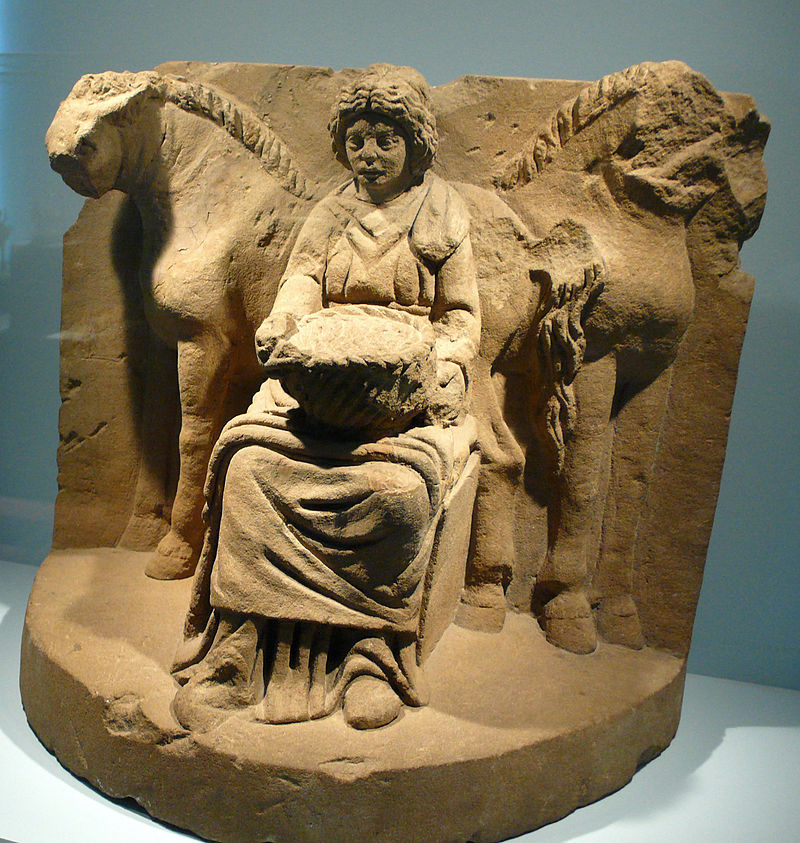Epona
Epona, a revered Celtic deity, embodied more than just the protection of horses, ponies, donkeys, and mules. She was also a goddess of fertility, ensuring abundance and prosperity.

Depictions of Epona often showcase her attributes that reflect this dual role. The patera, a ceremonial dish, and the cornucopia, a horn overflowing with bounty, symbolize her connection to blessings of the hearth and land. Furthermore, ears of grain and the presence of foals in some sculptures solidify her association with growth, both for animals and crops.

The widespread worship of Epona, a Celtic goddess, across the Roman Empire between the 1st-3rd c. AD stands out as a unique case. Unlike most Celtic deities, who were typically revered in specific localities, Epona transcended geographical boundaries and resonated with people throughout the vast Roman world.


